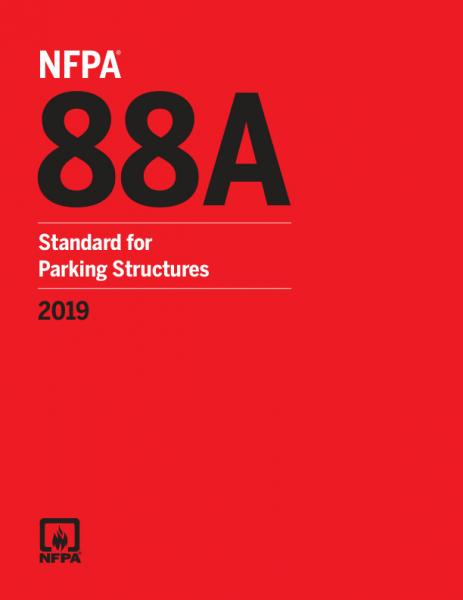GuidetoDesignofSlabs-on-Ground
ReportedbyAClCommittee360
AmericanConcreteInstitute?
GuidetoDesignofSlabs-on-Ground
may notbe reproduced orcopied n whole orpart in anyprinted mechanicalelectronic film or therdistribution and storage media without the written consent of ACl.
omissionsanderrorsin these documentsnspite of these effortstheusers ofACIdocuments occasionallyrequested to contact ACl.Proper use of this document includes periodically checking for errata at for the most up-to-date revisions.
significance and limitations of its content and remendations and who will accept responsibility for theaccept total responsibility for the application and use of this information.
Allinfomationinthispublicationisprovidedasswithoutwarrantyf anykindeitherexpressormlied non-infringement.
ACIand its members disclaim liability for damages of any kind including any special indirect incidental from the use of this publication.
including butnot limited to United States OccupationalSafety and Health Administration (OSHA)health and safety standards.
subscription or reprint and may be obtained by contacting ACl.
Most ACI standards and mittee reports are gathered together in the annually revised ACI Manual ofConcrete Practice (MCP).
American ConcreteInstituteFarmington Hills MI 48331 38800Country ClubDriveU.S.A.Phone: Fax: 248-848--848-3701
GuidetoDesignofSlabs-on-Ground
ReportedbyACI Committee360
Robert B. Andersen Vice Chsir
Chair
Phii Brand Seerrtary
CONTENTS
This gaide presns informw om sle deig of slab-mgnnd. prii i. e h plig dei ngfsiaffmetds aegifwreinfr reiforcde shg rep iffollomrd by infornati o shriarge and: carling. Advonages and g riedisagc f hese siab dig meds are prrilel. icfing br abliry of s sab dsie me racking a caig mre hoters. Er wih e bs slab design en pper etti ir is relisti epe crck-fee nd crl-fre fs. Ery er shldcracking nf cwrlg nn every pnje. 7is der nor ecessily reflect be aded by he desier and coracr ht i is moml o expect somenely m y a efr' qi f ct. Desige emples are giem.
Chapter 1Introduction p.360R-3
1.i-Purpose and scope 1.2-Work of ACl Committee 360 and other relevantmittees1.3Work of non-ACI organizations 1.4Design theories for slabs-on-ground1.5-Construction document iriformationi 1.6-Further research
Chapter2-Definitions p.360R-52.(-Definitions
3.1Introduction3.2-Slab types3.3-General parison of slab types3.5-Conclusion
3.4-Design and construction variables
Keywerds: crling: desip: loos-n-ground: gad foes: indstrildtpcf ers); shrinlage: slrinkage-pnating: slabs; slabs-on-gund: soilmcchanics; warping.
slabs-on-ground p.360R-8 Chapter4-Soll support systems for
4.1-Introduction4.2-Geotechnical engineering reports 4.3-Subgrade classification4.4-Modulus of subgrade reaction 4.5-Design of slab-suppor system4.6-Site preparation
ACI Comiee Repors GuidsManualsand Commnarisand inspecting construcion.This document is imended foth uscofindividuals who are pelem lo cvaluzte the are imtended for guidance in_ planning designing. executing.significance and limitstions of its conientand remendations and who willaccep responsibility for she application of themserial it coeainsThAmericanConcret Institute disclaims amy andalsibiy r std pinciplessttshall not he liable for any loss or damage arising therefrom.
Reference lo this documem shall not be made in contractdocumems.If ims found inthis documemt are desred by the Architec/Engineer obeapar thecontrac documets thy shall be restaled in mandatory language for incorporation bythe ArhitecifFngincer.
4.7-Inspection and site testing of slab suppor Chapter 13-Design of slabs for refrigerated4.8-Special slab-on-ground suppont problems facllities p.360R-44 13.1-IntroductionChapter 5-Loads p.360R-18 13.2-Design and specification considerations5.1-Introduction 5.2-Vehicular loads 13.3-Temperature drawdown5.4-Distributed loads 5.3-Concentrated loads Chapter 14--Reducing effects of slab shrinkage and curlling p.360R-455.5Line and strip loads 14.2-Drying and thermal shrinkage 14.1-Introduction5.7-Construction loads 5.6-Unusual loads 14.3-Curling and warping5.9-Factors of safery 5.8-Environmental factors 14.4Factors that affect shrinkage and curling 14.5-Compressive strength and shrinkage14.6Compressive strengthand abrasionresistance 14.7--Removing restraints to shrinkageChapter 6Joints p. 360R-22 6.1-Introduction 14.8-Base and vapor retarders/bariers6.3-Sawcut contraction joints 6.2--Load-transfer mechanisms 14.9-Distributed reinforcement to reduce curling and number of joints6.4-Joint protection 6.5-Joint filling and sealing 14.10-Thickened edges to reduce curling 14.11Relation between curing and curling14.12-Warping stresses inrelation to joint spacing 14.13Warping stresses and deformatonp.360R-31 Chapter 7-Design of unrelnforced concrete slabs 14.14-Efect of eliminating sawcut contraction joints with7.1-Introduction 7.2-Thickness design methods 14.15Summary and conclusions post-tensioning or shrinkage-pensating concrete7.3-Shear transfer at joints 7.4-Maximum joint spacing Chapter15-References p.360R-5315.1-Referenced standards and reporsChapter 8Design of slabs relnforced for crack-width control p.360R-34 8.1-Introduction 15.2-Cited references8.2-Thickness design methods Appendix1-Design examplesusing Porland CementAssociationmethodp.360R-588.3-Reinforcement for crack-width control only A1.1-Introduction A1.2-The PCA thickness design for single-axle loadChapter 9-Designof shrinkage-pensating concrete slabs p.360R-34 A1.3The PCA thickness design for slab with post loding9.1-Introduction 9.2-Thickness determination A1.4-Other PCA design information9.3-Reinforcement Appendix2-Slab thlckness designbyWire Reinforcement Institute method p.360R-609.4-Other considerations A2.1-Introduction A2.2-The WRIthicknesselection.forsingle-axle.wheelChapter10-Design of post-tensloned slabs-on-ground p.360R-38 A2.3The WRI thickness selection for aisle moment due load10.1-Introduction 10.2-Applicable design procedures to uniform louding10.3-Slabs post-ensioned for crack control Appendix3-Design examples using Corps of10.4Industrial slabs with post-tensioned reinforcement for structural support Engineers'charts p.360R-63 A3.1-IntroductionChapter11-Fiber-reinforced concrete A3.3-Heuvy lift ruck loading A3.2-Vehicle wheel loadingslabs-on-ground p.360R-40 11.1Introduction Appendlx 4Slab design using post-tensloning 11.2-Synthetic fiber reinforcement p.360R-6311.3-Steel fiber reinforcement A4.2-Design example Equivalent tensil stress design A4.1Design example: Posl-tensioning to minimize crackingChapler12-Structural slabs-on-ground supporting building code loads p.360R-44 Appendix 5-Deslgn example using shrinkage-12.1-Introduction 12.2-Design considerations pensating concrete p.360R-65 A5.1-Introduction









